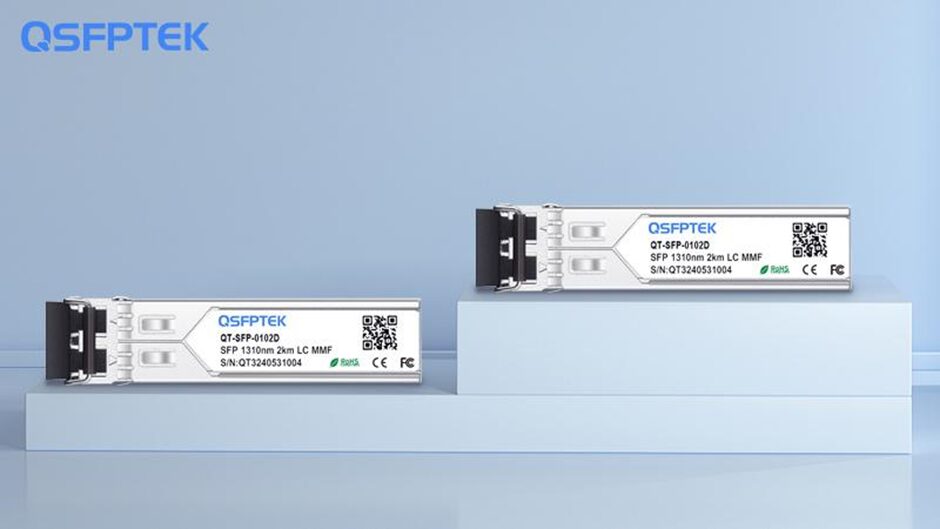In the world of networking, achieving a balance between performance, cost, and energy efficiency is a constant challenge. While high-speed transceivers such as 1G, 10G, and 100G dominate most modern data center and enterprise networks, there is a significant demand for more affordable, lower-speed solutions in specific use cases. One such solution is the 100M SFP (Small Form-factor Pluggable) transceiver, a compact, cost-effective module designed for low-bandwidth applications. Ideal for small businesses, campus networks, and other environments with limited bandwidth requirements, the 100M SFP module offers reliable performance at a fraction of the cost of higher-speed alternatives. This article explores the key features of 100M SFP transceivers, their applications, and the advantages they bring to low-cost network solutions.

What Are 100M SFP Transceivers?
A 100M SFP transceiver is a small, modular device used to enable network connectivity over fiber optic cables. SFP stands for Small Form-factor Pluggable, a widely used interface standard for transceivers that allows for hot-swapping and easy replacement. The 100M version of this transceiver supports a data transfer rate of 100 Mbps (megabits per second), making it suitable for low-speed network applications.
Typically used in environments where data throughput requirements are not high, the 100M SFP module is designed for long-distance optical fiber transmission, often utilizing multimode or single-mode fibers. It comes in various versions, including those with LC or SC connectors, to accommodate different types of network installations.
Key Technical Specifications
The 100M SFP transceiver boasts several important technical features that make it an attractive option for budget-conscious network setups:
Data Transfer Rate: With a maximum speed of 100 Mbps, these transceivers are suitable for applications that do not require high-bandwidth, such as simple data transfers, voice-over-IP (VoIP) systems, or low-speed Internet browsing.
Range: 100M SFP transceivers are available for both short and long-distance connections, with distances ranging from 550 meters for multimode fiber to over 10 kilometers for single-mode fiber. This flexibility makes them suitable for various network sizes and layouts.
Low Power Consumption: Compared to higher-speed transceivers, the 100M SFP is energy-efficient, consuming significantly less power. This contributes to reduced operating costs, particularly in large deployments or environments where power conservation is a priority.
Cost-Effective: As a low-speed transceiver, the 100M SFP module is much more affordable than higher-speed modules. This cost-effectiveness makes it a preferred choice for networks with limited budget constraints, particularly for businesses and institutions that don’t require the higher speeds of 1G or 10G transceivers.
Applications of 100M SFP Transceivers
100M SFP transceivers excel in specific use cases where bandwidth requirements are modest, yet reliable network connectivity is still crucial. Some of the most common applications include:
Small Business Networks
For small businesses, the 100M SFP transceiver offers an ideal balance of performance and cost. Small businesses often have limited IT budgets and don’t require the high throughput of 1G or 10G connections. The 100M SFP module can provide reliable connectivity for basic networking tasks such as Internet access, email, and file sharing. By using 100M SFP transceivers, businesses can build out their networks at a lower cost while maintaining the necessary performance for everyday operations.
Campus Networks and Educational Institutions
Educational institutions, such as schools, colleges, and universities, often require robust networks to support student activities, faculty research, and administrative functions. However, many of these networks don’t demand the high-speed connections found in large corporate data centers. 100M SFP transceivers are ideal for supporting classroom connectivity, student internet access, and campus-wide intranet applications. The affordability of these modules helps institutions set up and maintain their networks without overextending their budgets.
Surveillance and Industrial Control Systems
100M SFP transceivers can also be deployed in specialized environments like industrial control systems and surveillance networks. In such cases, the focus is often on long-distance, stable connectivity rather than high throughput. For example, in surveillance systems, where video feeds from multiple cameras need to be transmitted to a central control unit, 100M SFP transceivers provide a reliable and cost-effective method of connecting the various components across large areas. Similarly, in industrial settings, 100M SFP modules are used for connecting sensors, controllers, and monitoring systems, where the volume of data being transmitted does not necessitate high-speed connectivity.
Cost Advantages of 100M SFP Transceivers
One of the most significant benefits of using 100M SFP transceivers is their cost-efficiency. When compared to higher-speed transceivers such as 1G or 10G, 100M SFP modules offer the following advantages:
Lower Initial Investment
The 100M SFP transceiver is much more affordable than higher-speed modules. This makes it an ideal choice for small businesses, educational institutions, and other organizations that need to build networks on a tight budget. The lower upfront cost allows for more cost-effective network deployment without sacrificing basic functionality.
Reduced Operating Costs
In addition to being more affordable to purchase, 100M SFP transceivers are energy-efficient, which leads to lower power consumption and reduced electricity costs. This is especially valuable in large-scale deployments or long-term infrastructure projects, where every reduction in power usage contributes to lower operational expenses.
Lower Total Cost of Ownership (TCO)
Beyond initial investment and operational savings, the total cost of ownership for 100M SFP transceivers is also lower due to their long lifespan and ease of maintenance. They are highly reliable and designed for straightforward installation and replacement, further reducing the need for costly IT resources.
Conclusion
100M SFP modules provide a cost-effective and efficient solution for low-bandwidth network applications. Whether for small businesses, educational institutions, or specialized environments like surveillance or industrial control systems, these modules offer reliable performance at a fraction of the cost of higher-speed alternatives. With their low power consumption, affordability, and flexibility in deployment, 100M SFP transceivers enable organizations to build scalable, efficient networks without exceeding budget constraints. As network needs continue to evolve, the 100M SFP transceiver will remain a valuable tool for cost-conscious network administrators seeking to meet basic connectivity demands.